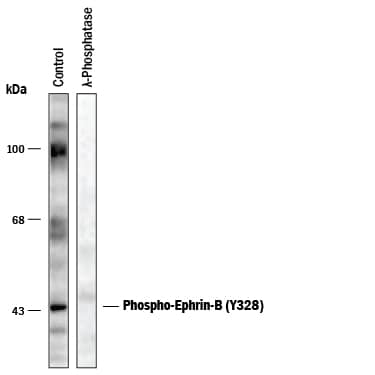Ephrin-B Products
Ephrins are naturally divided into two structural groups. All ligands share a conserved extracellular sequence, which most likely corresponds to the receptor-binding domain. This conserved sequence consists of approximately 125 amino acids and includes four invariant cysteines. The B-class ligands are transmembrane proteins, which can be tyrosine phosphorylated upon receptor ligation. Class B ephrins show 33% amino acid sequence identity in their extracellular segments and 44% amino acid sequence identity in their cytoplasmic regions.
3 results for "Ephrin-B" in Products
3 results for "Ephrin-B" in Products
Ephrin-B Products
Ephrins are naturally divided into two structural groups. All ligands share a conserved extracellular sequence, which most likely corresponds to the receptor-binding domain. This conserved sequence consists of approximately 125 amino acids and includes four invariant cysteines. The B-class ligands are transmembrane proteins, which can be tyrosine phosphorylated upon receptor ligation. Class B ephrins show 33% amino acid sequence identity in their extracellular segments and 44% amino acid sequence identity in their cytoplasmic regions.
| Reactivity: | Human, Mouse, Rat, Chicken, Xenopus |
| Details: | Rabbit IgG Polyclonal |
| Applications: | WB |
| Reactivity: | Human, Mouse, Rat, Chicken, Xenopus |
| Details: | Rabbit IgG Polyclonal |
| Applications: | WB |
| Reactivity: | Human, Mouse, Rat, Chicken, Xenopus |
| Details: | Rabbit IgG Polyclonal |
| Applications: | WB |



